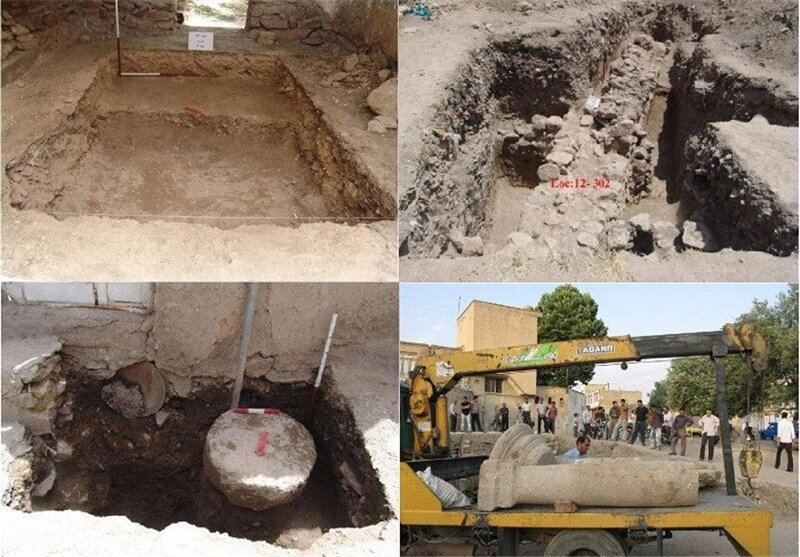The sixth and the last archaeology season has been scheduled to possibly unearth the main structure of Laodicea Temple, Nahavand’s tourism chief Mohsen Khanjan announced on Sunday. A budget of three billion rials (some $71,000 at the official exchange rate of 42,000 rials per dollar) has been allocated to the mission which will commence in the month of Esfand (starting Feb. 19).
Regarding the achievements of the last five archaeological seasons, the official noted:
"In addition to a Greek inscription, other significant objects such as bronze statues of Greek gods, a stone altar, column head, column shaft, column base and pottery pieces had been discovered in Dokhaharan neighborhood [of Nahavand]. Regarding those findings, we concluded that the history of the city of Nahavand goes far back in prehistoric times, on the contrary to what previously believed it only dates back to the Seleucid period. The outcome of previous excavations determined that a Seleucid city was established on remains of a prehistoric settlement… and the sixth season aims to discover the main structure of Laodicea Temple."
In the fifth season of excavation, 12 trenches were dug tightly based on speculations and discoveries made during the four previous seasons… the season, however, yielded some new clues on the ancient sanctuary, Khanjan explained.
The archaeological project also aims at solving the problems of the residents of the districts near the site, who haven’t been allowed to construct buildings for over 50 years.
In 1943, archaeologists discovered an 85x36 centimeter ancient inscription of 30 lines written in Greek calling on the people of Nahavand to obey the laws of the government. The inscription indicated the existence of the Laodicea Temple, which had been built by the Seleucid king who ruled Asia Minor, Antiochus III the Great (223-187 BC), for his wife Queen Laodicea.
Two of the inscriptions as well as four bronze statuettes, unearthed at the site, are on display in the National Museum of Iran in downtown Tehran. And, column capitals and bases are currently being used as decorations in Nahavand’s Hajian Bazaar and several other parts of the city.
Antiochus was the most distinguished of the Seleucids. Having made vassal states out of Parthia in present-day northeastern Iran and Bactria (an ancient country in Central Asia), he warred successfully against the Egyptian king Ptolemy V and in 198 BC obtained possession of all of Palestine and Lebanon.
He later became involved in a conflict with the Romans, who defeated him at Thermopylae in 191 BC and Magnesia (now Manisa, Turkey) in 190 BC. As the price of peace, he was forced to surrender all his dominions west of the Taurus Mountains and to pay costly tribute. Antiochus, who early in his reign had restored the Seleucid Empire, finally forfeited its influence in the eastern Mediterranean by his failure to recognize the rising power of Rome.
The Seleucid Empire was a Hellenistic state ruled by the Seleucid dynasty which existed from 312 BC to 63 BC; Seleucus I Nicator founded it following the division of the Macedonian Empire vastly expanded by Alexander the Great. Seleucus received Babylonia (321 BC) and from there expanded his dominions to include much of Alexander's near-eastern territories. At the height of its power, the Empire included central Anatolia, Persia, the Levant, Mesopotamia, and what is now Kuwait, Afghanistan, and parts of Pakistan and Turkmenistan.


No comments:
Post a Comment